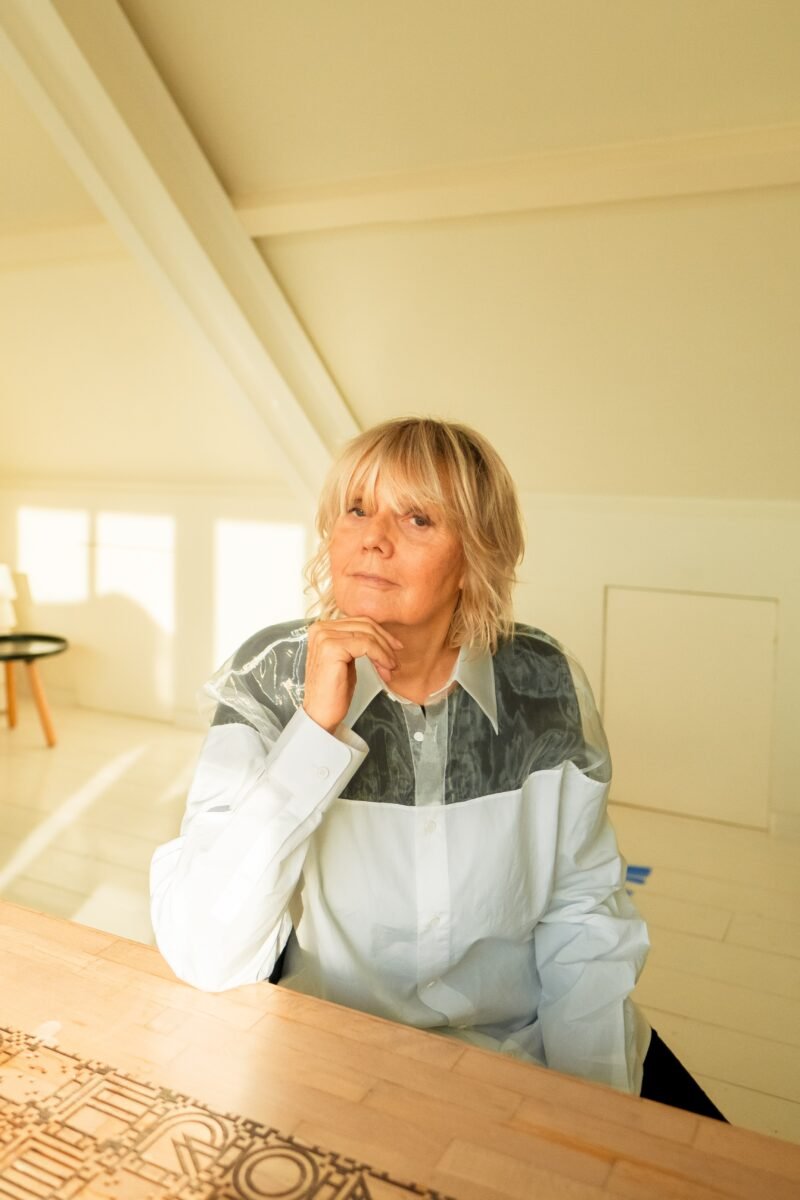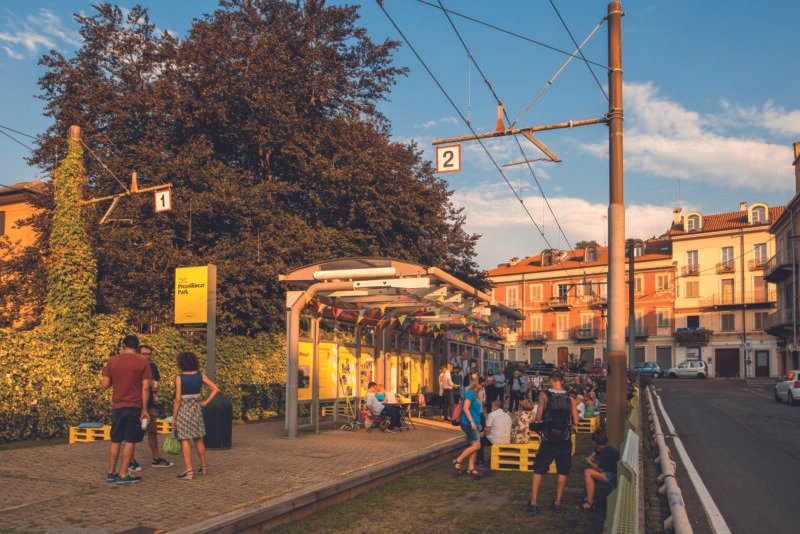Klaus Overmeyer On The Importance Of Urban Pioneers
 Klaus Overmeyer is a Berlin-based landscape architect. The philosophy of his office, UC Klaus Overmeyer, is deeply rooted in an optimistic attitude towards the contemporary landscape stimulating an ongoing research into the relationship of built and unbuilt environments today.
Klaus Overmeyer is a Berlin-based landscape architect. The philosophy of his office, UC Klaus Overmeyer, is deeply rooted in an optimistic attitude towards the contemporary landscape stimulating an ongoing research into the relationship of built and unbuilt environments today.
UC stands for Urban Catalyst, which was a project by Philipp Oswalt, Phillipp Misselwitz and Overmeyer himself. In 2007, Overmeyer published a book called Urban Pioneers, in which he wanted to emphasise the strategic importance of temporary use projects for urban development. “Space pioneers open up new development prospects at disused sites that defy the bounds of traditional urban planning.” Pop-Up City went to Berlin and talked with Klaus Overmeyer about urban pioneers, temporary strategies and urban developments in the German capital.
What makes Berlin such a unique city concerning urban and social developments?
“In the nineties, Berlin was a unique city compared to other European metropolitan areas. There was simply a lack of regulations. Many people expected Berlin to turn into a new economic power after the fall of the Berlin Wall, but that didn’t happen. Only the political system moved to the east, but the big money stayed in the west of Germany. Nowadays, Berlin is completely bankrupt, with a 60 billion euros dept. There is an ongoing conflict between Germany and Berlin. In the nineties, Berlin was the perfect breeding ground for many cultures, environments and initiatives. You could come here, live cheap and just try things. People could live here by experimenting. However, there was no real economy. In Berlin you have to be very creative and accustomed to working in projects, not having a permanent job. People have to be very flexible and mobile in order to be able to live a successful life. Creatives are no squatters or anti-imperialists such as in the eighties, they are the ideal of the modern state. People who take their responsibility, people who are flexible and mobile and are used to working on different projects rather than having one steady job. There is an ongoing debate about self-sufficiency. On one hand, self-sufficiency should be a situation that you can use for your own development. On the other hand, people say, and they are right, it’s turning into one big survival of the fittest.”
To what extent did the so-called ‘creative city’ change over the last years?
“Well, everything is more regulated nowadays. Many companies, such as Deutsche Bahn, understand they own very special locations in the city that are easy to develop. There is a classic conflict between the urban pioneer and the developer, which was there already in the nineties, but at that time the pioneers just moved on to another place in the city. Now it’s different. It’s more difficult to find good spaces, and the legal ‘gray area’ disappeared. All contracts are formalised. In comparison to Hamburg or München we are poor, but Berlin’s creative scene is huge, for instance in terms of emerging economies, art, science. I think Berlin is the most creative city in Europe. Nothing is too expensive, it’s easy to rent a space somewhere. Economists are realising Berlin has a unique creative economy with a big potential. For instance we now have Tanja Mühlhans, who is coordinator for Economic Development in Film, Media and Creative Industries in Berlin. She aims to emphasise the importance of the creative industry for economic development. In Berlin, the economic potential of creativity is not as highly valued as it is in Amsterdam. The city has a very high level of creativity and experimentality, but economists argue that we have to move towards professionalism in order to make creativity rewarding. Some economists went asking graduate students of the Fashion Academy if they say themselves designing clothes and earning enough money with it in the future. Very, very few people thought they could do that for a living.”
 Tell us more about your book Urban Pioneers.
Tell us more about your book Urban Pioneers.
“From 1991 till 2006, the socialist Hans Stimman was ‘Senatsbaudirektor’ in Berlin. He was both loved and hated for his strong top-down planning principles. In the nineties were very strong top-down planning. He led the reconstruction process in downtown Berlin. His thoughts on urban development dominated the nineties. He is now retired. In 2004 we noticed there is much space in the city that’s not cultivated. The people say: make it a park or so. But there is no money for parks and maintenance. They came up with a very pragmatic alternative: they wanted to discover which activities took place in the urban residues, and they decided to consider the people behind those initiatives as partners in urban development. We did a research project in which we mapped over more than 100 bottom-up projects throughout Berlin. During the Stimman period those small activities played no role. Because this project was such an eye-opener, we organised an exhibition and a forum around this topic. And, of course, we published the book Urban Pioneers.”
What does Urban Catalyst stand for? How should urban development be practised?
“Urban Catalyst was the research project I did along with Philipp Oswald and Phillipp Misselwitz. Under the flag of Urban Catalyst, we did, for instance, the project Zwischenpalastnutzung for the Palast der Republik. Furthermore, Urban Catalyst is a platform. Originally I’m a landscape architect, but within UC I do a plenty of projects concerning urban development and urban planning. I’m somewhere between the traditional urban planning principles and actual urban development. I think that crossover has a great future, as still many people consider urbanism something purely physical and formal. They are wrong. I think it is still important to a design a city physically, but on the other side you should definitely take a look at the soft side of the city and recognize those soft structures. One important lesson: you should not be merely an activist. You need to convince the ‘other side’ of the concept that your idea is the right one. Berlin is going through some interesting developments. For instance, there is the Tempelhof debate. This former airport was property of the state, but now the city itself owns it. That place is so great that there just too much space for developers. The current stage of redevelopment is interesting for alternative ways of urban development and strategies. Together with two other agencies including Raumlabor, we are developing a plan for temporary use, but also for redevelopment of the whole area. Our concept defines work on different levels: organisation, use and activation. The fun is, you have to work with uncertainty. It’s just stupid to think of planning a static city that will be the same for the next 200 years. Everything is going faster these days. You just need more white spots on the map. Amsterdam-based urban strategist Jeroen Saris developed an interesting model for urban development in which you should have at least a period of five years to an open an area, attract people with ideas and forget about strict rules. Those are the ingredients for experiments and creative development. An economist from Cologne recently said that real estate development companies should not only be focused on investors, but also on ideamakers. Those idea investors should not be paid in cash, but in rights to use the space for a certain time. Everyone is part of urban development.”



